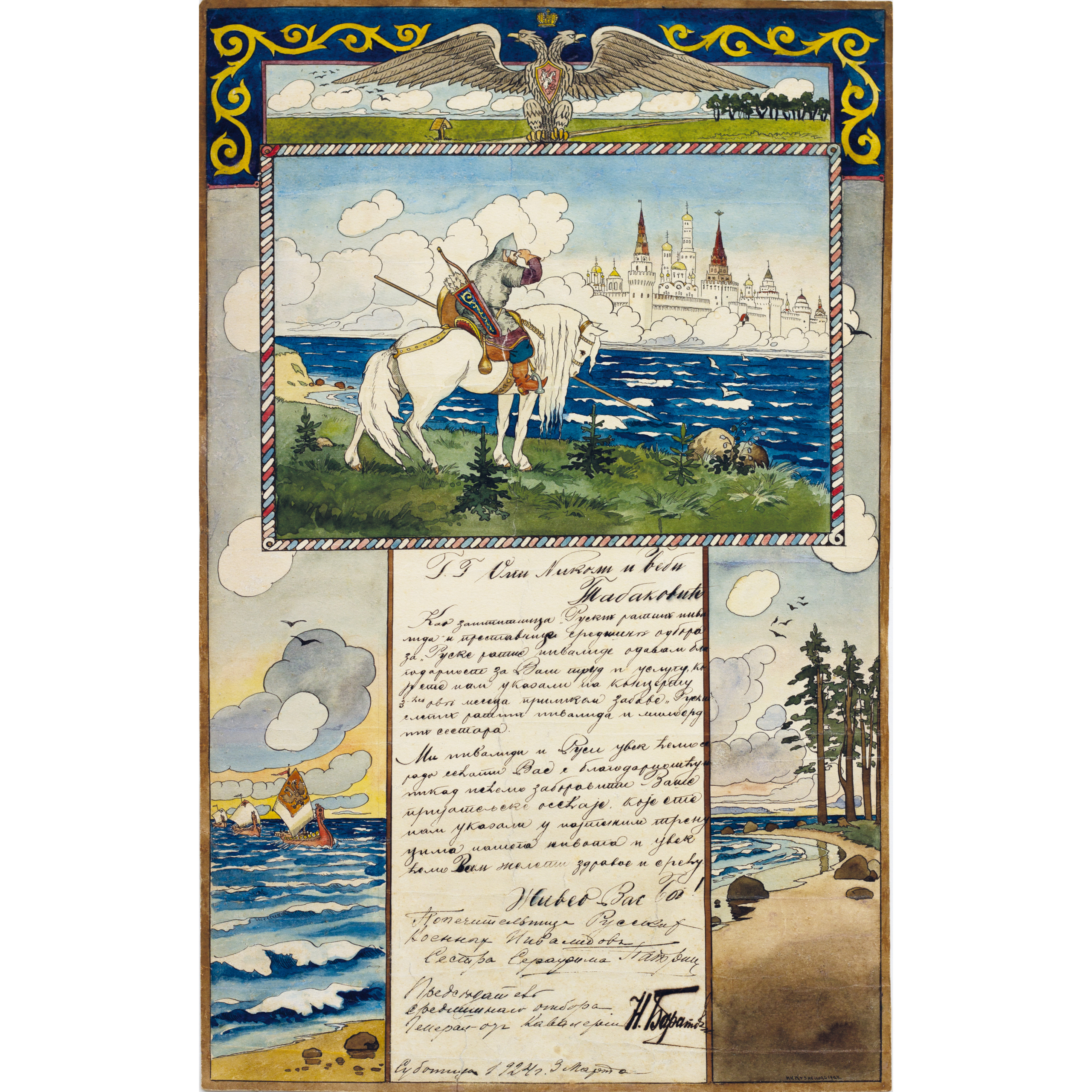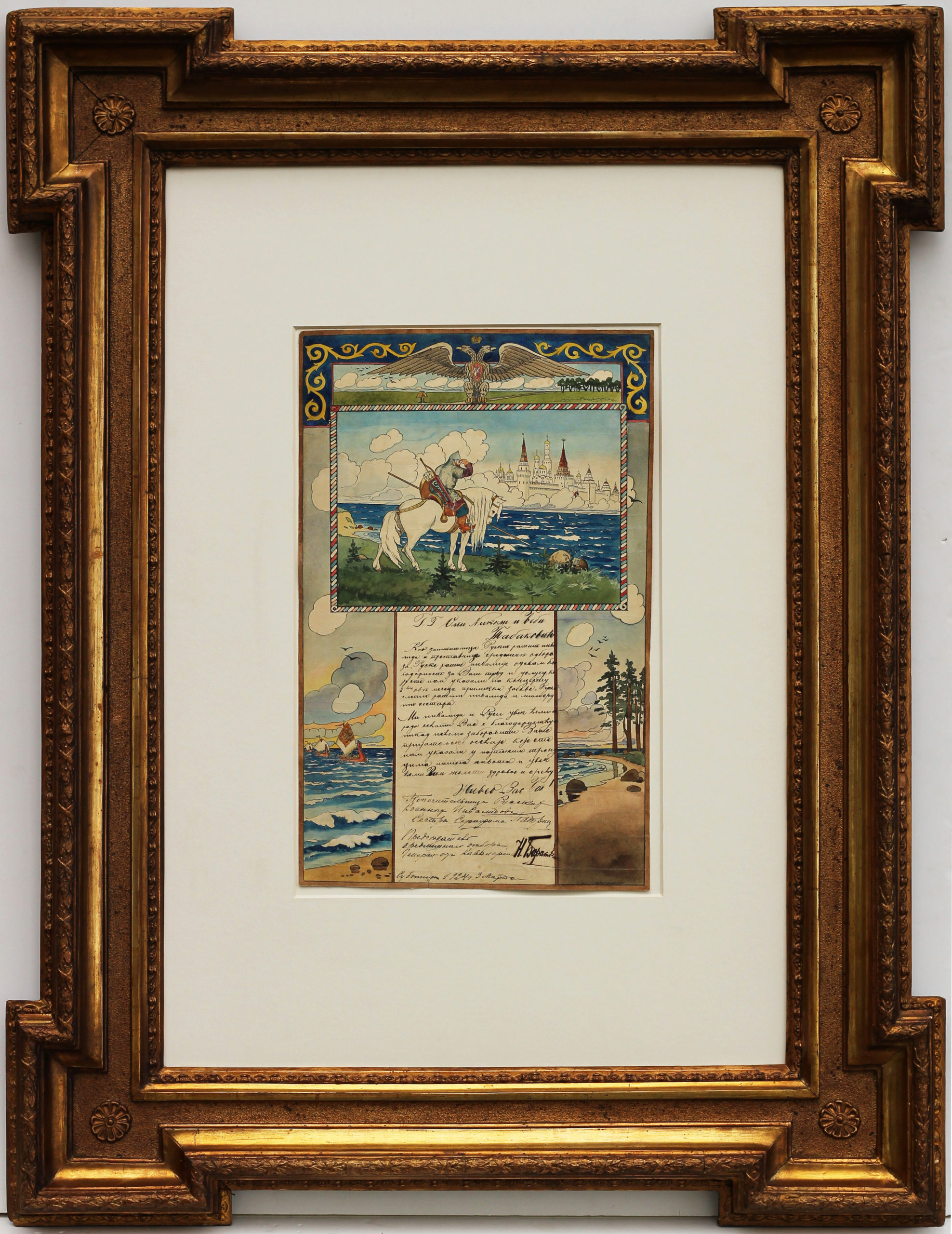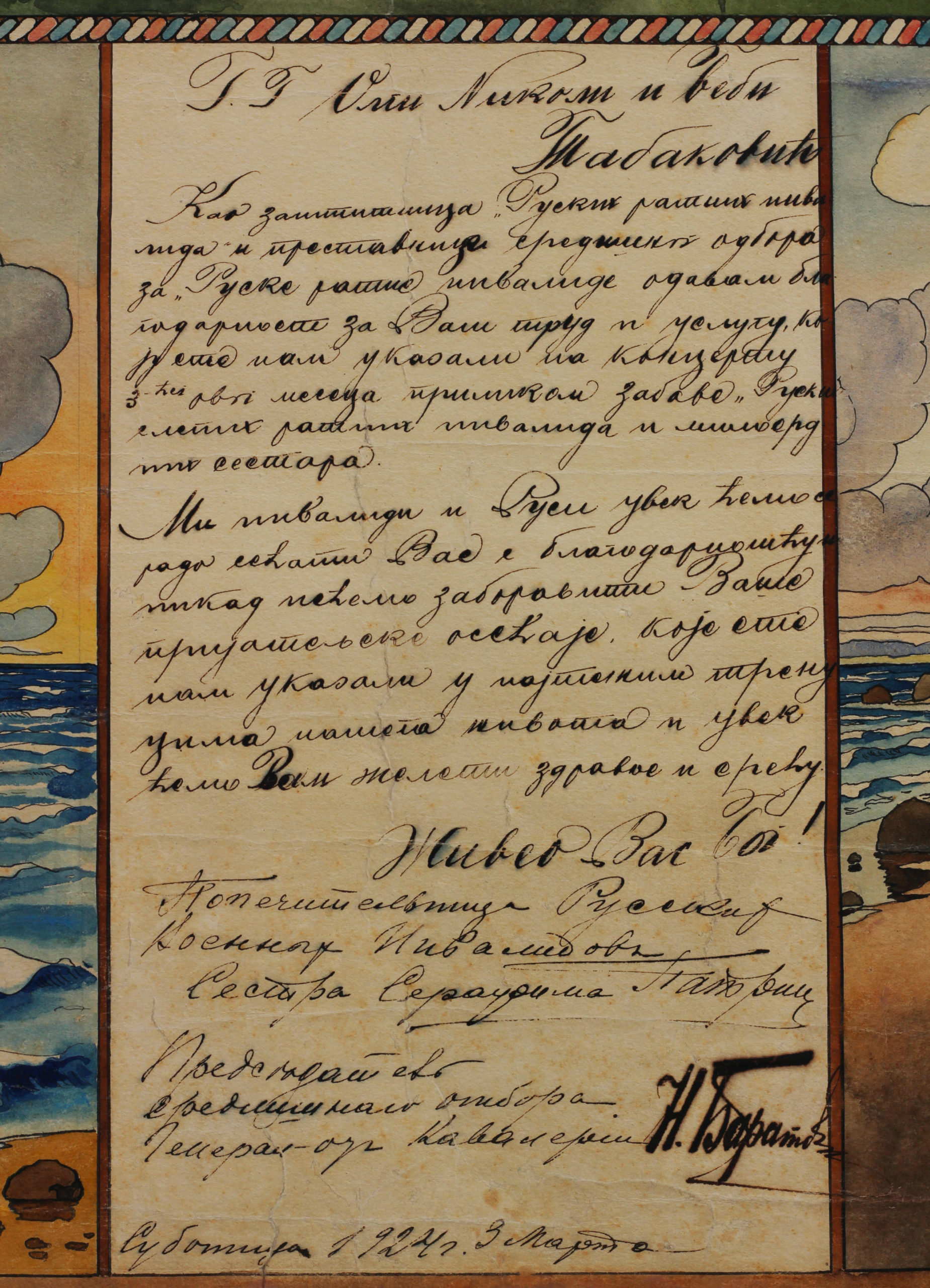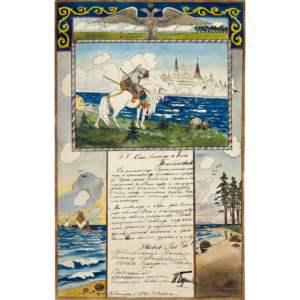KUZNETSOV KONSTANTIN KONSTANTINOVICH (1895-1980)
Konstantin Kuznetsov (born May 3, 1895 in St. Petersburg – died March 9, 1980 in Los Angeles) was a Serbian comic book artist of Russian origin. He drew according to the scripts of Branko Vidich, Svetislav B. Lazich and Pavle Polyakov, but he also wrote the scripts for his own comic creations.
He was one of the founders of modern comics in Serbia and Yugoslavia, one of the cartoonists gathered around the Belgrade Circle, an extraordinary comic school, which was world-famous. His original style made his achievements to be at the very top of Yugoslav and European comics. The most famous titles are: „ Countess Margo“, „Baron the Vampire“, „ Knyaz Milosh“ (biography of Milosh Obrenovich), „ Sinbad the Sailor “, „Peter The Great“ (a comic about the ruler of the same name in Russia), and based on Pushkin’s works „Queen of Spades“, „ Fairy Tale of Tsar Saltan “, „The Tale of the Golden Cockerel“.
In 1920, in the vortex of history, he was forced to flee to the south of Russia, and then further away from Russia – by some decision of destiny right up to us, in the Kingdom of Serbs, Croats and Slovenes. He first arrived in Pancevo, where a Russian art school existed at the time, and from there he moved to Belgrade, where he worked as a cartoonist and book illustrator, and drew advertisements at the Mitic Department Store.
His comic book experiment soon begins. In 1937, the youth newspaper Mika Mis published his first comic entitled “Mother” which deals with a chosen period from our past. Probably due to the success of this comic, but also the author’s notable talent, Kuznetsov was hired to draw a series of realistic comics for this paper – “The Story of a Four-Legged Cat”. From this comic, which expresses the author’s creativity in a wide range of genres, from historical and crime stories to those inspired by “One Thousand and One Nights”, he made twenty-five complete episodes and a shorter comic, and all of that until the beginning of World War II. In addition to this realistic comic, Kuznetsov draws three episodes with two cute monkeys “Bohemians”, which were done in the style of Walt Disney. For „Politikin zabavnik“ he draws comics inspired by Russian history (“Peter the Great”) and fairy tales (“The Tale of the Golden Cockerel ”, “ Fairy Tale of Tsar Saltan ” by Pushkin), and for „Mali zabavnik“ which was published during the German occupation, he works with the theme of Pyotr Yershov’s fairy tale “The Little Humpbacked Horse”. At that time, he was drawing under the visible influence of the Russian illustrator Ivan Bilibin. During the war, he continued to workб mainly drawing war caricatures and posters (some of which were executed in the form of comics: “Story without words”, “Lie of the East” and “The warning””) but he returns to comics by the 1944.
Kuznetsov’s comics are, for today’s eye, drawn with surprisingly high quality and modern approach, leaving critics speechless. He is one of the few of our pre-war comic book authors who managed to establish himself outside the Kingdom of Yugoslavia; his works were published by French newspapers (such as Gavroche, Jumbo, Le journal de Toto, Les grandes aventures and others).
At the end of the war, Kuznetsov’s personal tragedy of escaping is continued and at the end of 1944, he left Belgrade. First he arrived in an Austrian camp, and two years later he was transferred to Germany, where he continued to actively draw – he did illustrations for magazine Ogni and caricatures in humorous magazine Petrushka. Until 1950, he immigrated to the United States, where he continued his artistic career as an illustrator and painter (watercolors published in the form of postcards and calendars, picture books, etc.).




